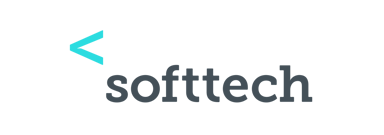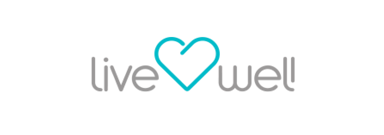
Reboarding Strategies for Returning Employees: Tips for a Smooth Transition
As businesses evolve, so do the needs of their employees. Whether workers return after a leave, a sabbatical, or a long period of remote work, they need more than just a "welcome back."
Without a well-planned reboarding strategy, returning employees can feel disconnected, overwhelmed, or out of sync with the current culture.
Let’s explore the importance of reboarding, when it should be done, and tips to make the transition as smooth as possible for employees. 🎯
What is Reboarding?
Reboarding is reintegrating returning employees into the workplace after a significant absence. Unlike onboarding, which introduces new hires to the company, reboarding focuses on reconnecting existing employees with updated processes, culture changes, and dynamics they may have missed when they were away. This process acknowledges that returning employees have different needs than new hires.
Reboarding is like a bridge between an employee's past role and their future within the organization. It's about renewing their enthusiasm and helping them rediscover their place in the company.
Why is Reboarding Important?
The significance of effective reboarding cannot be overstated. Key benefits include 👇:
- Productivity Boost: Well-reboarded employees reach optimal productivity faster, reducing the time it takes to get back up to speed.
- Employee Retention: Shows investment in returning talent, increasing loyalty and reducing turnover. Organizations with robust reboarding programs report higher retention rates for returning employees.
- Team Cohesion: Helps bridge gaps between existing and returning team members, maintaining strong team dynamics. This is especially crucial as dynamics may have changed during the employee's absence.
- Risk Mitigation: Ensures returning employees are up-to-date with compliance and safety protocols.
- Knowledge Integration: Lets returning employees to bring fresh perspectives while reintegrating with existing processes.
When to Reboard?
Reboarding becomes necessary in various scenarios 📌:
- After parental leave (3+ months)
- Following extended medical leave
- Post-sabbatical
- When returning from temporary assignments
- After company restructuring or major changes
- Following long-term remote work periods
- After extended unemployment or layoff periods
- When transitioning from part-time to full-time
The key is to assess the duration of absence and the extent of workplace changes during that time. Generally, absences longer than three months warrant a formal reboarding process. ⏰
Key Components of a Successful Reboarding Process

1. Pre-return Communication
Start the process before the employee's return. Send updates about:
- Team changes and new hires
- New projects and initiatives
- Technology updates and system changes
- Policy modifications and compliance updates
- Industry developments and market changes
Implement a graduated communication approach, starting with monthly updates three months before return, moving to weekly updates in the final month.
2. Day One Essentials
Ensure a warm welcome with:
- Updated workstation with necessary equipment
- Refreshed login credentials and system access
- Welcome back kit (company swag, team photos, etc.)
- Team lunch or casual meet-up
- First-day schedule with buffer time for adjustment
- Updated organization chart and contact list
- Brief one-on-one with direct manager
3. Structured Learning Plan
Create a tailored plan covering:
- Missed training sessions and certifications
- New software or tools introduced during absence
- Changed processes and workflows
- Updated compliance requirements
- Industry developments and best practices
Design the learning plan in digestible modules, spread over several weeks to prevent information overload.
4. Mentorship Pairing
Assign a "reboarding buddy" to:
- Answer questions and provide guidance
- Offer context for organizational changes
- Provide social support and reintegration
- Help navigate new team dynamics
- Share informal updates and cultural changes
The buddy system should extend beyond the initial return period, ideally lasting for 3-6 months.
Technology and Tools for Reboarding
Leverage technology to streamline the reboarding process 👩💻:
Learning Management Systems (LMS)
· Track completed training modules
· Provide self-paced learning content
· Document policy acknowledgments
· Generate progress reports for HR and managers
· Customize learning paths based on absence duration
Communication Platforms
· Use tools like Slack or Microsoft Teams for quick team reconnection
· Implement video conferencing for remote reboarding sessions
· Create dedicated channels for returning employees
· Utilize asynchronous communication tools for flexible learning
HR Software
· Digital checklists for tracking progress
· Automated reminders for key reboarding milestones
· Tools for gathering feedback on the reboarding experience
· Analytics to measure reboarding effectiveness
· Integration with performance management systems
Project Management Tools
· Gradual project reintegration tracking
· Collaboration spaces for team projects
· Documentation of project histories and decisions
· Timeline visualization for missed developments
Understanding the Challenges
Common reboarding hurdles and their solutions include 📌:
Knowledge Gaps
Challenge: Missing crucial developments and changes
Solution: Create comprehensive documentation of changes and provide targeted training sessions. Use microlearning techniques for efficient knowledge transfer.
Social Anxiety
Challenge: Feeling out of place or disconnected from the team
Solution: Implement gradual team reintegration and organize informal social activities. Consider both in-person and virtual options for team building.
Changed Dynamics
Challenge: Adapting to new team structures or reporting lines
Solution: Provide clear communication about role changes and new team structures. Organize team alignment sessions to clarify expectations and responsibilities.
Technology Learning Curve
Challenge: Struggling with new tools or systems
Solution: Offer dedicated IT support and hands-on training sessions for new tools. Create quick reference guides and provide access to online tutorials.
Essential Reboarding Checklist
Before Return:
- Schedule team meeting to discuss return
- Update necessary systems and access
- Prepare workstation and equipment
- Create personalized reboarding plan
- Send welcome back package
- Brief team on reintegration plan
- Update HR records and payroll information
First Week:
- Conduct welcome meeting with team
- Complete HR check-in for paperwork and benefits
- Provide technology refresh training
- Assign reboarding buddy
- Schedule key stakeholder meetings
- Review current projects and priorities
- Set up regular check-ins with manager
First Month:
- Hold weekly check-ins with manager
- Complete required training modules
- Begin gradual project reintegration
- Organize social integration activities
- Review and adjust workload as needed
- Gather initial feedback on reboarding experience
- Assess any additional support needed
Best Practices for HR Professionals

- Customize the Approach: Every returning employee's situation is unique. Tailor the reboarding process to individual needs and circumstances, considering factors like absence duration, role changes, and personal preferences for learning and reintegration.
- Focus on Culture: Help returning employees reconnect with company culture, especially if it has evolved during their absence. Share updates on new values, practices, or initiatives. Consider creating a culture refresher guide highlighting key changes and continuities.
- Set Clear Expectations: Establish transparent timelines and goals. Create a shared document outlining milestones and objectives for the first 30, 60, and 90 days.
- Act on Feedback: Keep improving your reboarding program based on returning employees' experiences. Regular check-ins and surveys can provide valuable insights. Use both quantitative metrics and qualitative feedback to refine your approach.
The ROI of Effective Reboarding
Investing in reboarding is very effective 👇:
- Reduced time to full productivity
- Improved employee retention rates
- Enhanced team morale and cohesion
- Better knowledge retention and transfer
- Increased employee engagement scores
By implementing a comprehensive reboarding strategy, organizations can expect to see:
- Lower turnover costs
- Increased employee engagement and job satisfaction
- Improved team performance and collaboration
- Enhanced employer brand and reputation
- Better succession planning and knowledge management
Effective reboarding is a critical process for ensuring returning employees feel valued, supported, and equipped to succeed.
Organizations that invest in creating strong, flexible, and employee-centric reboarding programs will find themselves better equipped to handle the challenges of the modern workforce while creating a culture of growth.
The goal of reboarding isn't just to bring employees back—it's to help them thrive in their return to work. 🌟
Get a demo
- Quickly find top candidates with smart application management
- Improve team collaboration using built-in communication and workflows
- Offer a smooth candidate experience to strengthen your employer brand
- Count on 24/7 support for a hassle-free hiring process
- Quickly find top candidates with smart application management
- Improve team collaboration using built-in communication and workflows
- Offer a smooth candidate experience to strengthen your employer brand
- Count on 24/7 support for a hassle-free hiring process
"We truly felt the speed difference. Everything was smoother, and candidate feedback was much more positive. It made our jobs easier."

Trusted by 100+ teams
Get Informed,F.A.Q.
Revolutionize your hiring process with our transformative Applicant Tracking System (ATS.)
Suggested Blog Posts

40+ Employee Wellness Statistics

12 Employee Engagement Statistics to Track in 2026
















